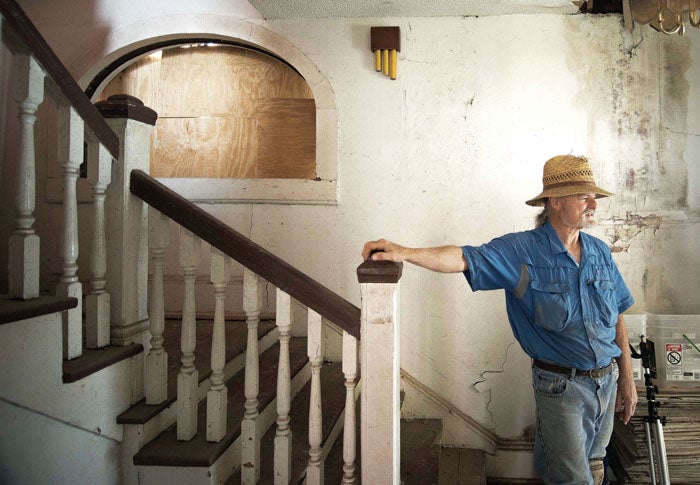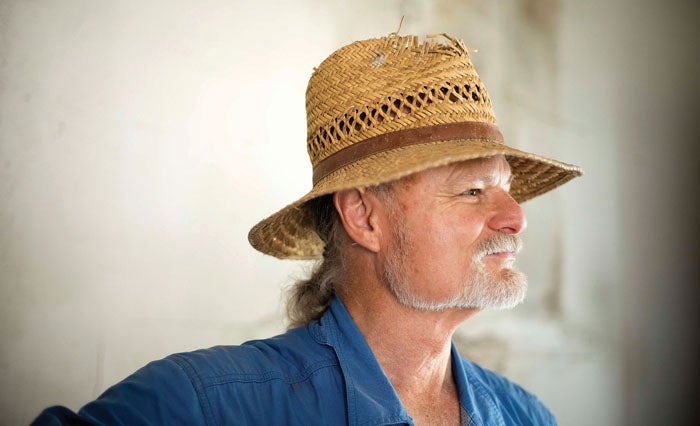Preservation soldier: Retired Marine Black made volunteering for Historic Salisbury his calling
Published 12:00 am Tuesday, December 18, 2018
SALISBURY — I hadn’t heard from Doug Black since September, and I feared the worst.
Doug had been battling a grave illness for some time — one that slowed him down, by his own admission. But “slow” to Black was merely a reduction to normal cruising speed for the rest of us.
Back in April, this retired Marine colonel cut back his volunteer hours at the McCubbins House on North Main Street to four hours every Monday, Tuesday and Thursday morning.
He and his famous “Black’s Brigade” — whose leadership he had already turned over to right-hand man Steve Cobb — were doing stabilization work on the old house, one of the many Historic Salisbury Foundation revolving-fund properties the brigade has kept from falling in on themselves through the years.
It was grassroots, elbow-grease, volunteer preservation at work, maybe the best kind.
Doug Black died Friday, and as an organization, Historic Salisbury Foundation seems to be draped in black, a literal symbolism to mark his passing.
“Doug Black will be remembered as a kind, dedicated and generous man who worked daily to support the mission of Historic Salisbury Foundation — preserve, protect and revitalize the historic fabric of Salisbury and Rowan County,” the foundation said in a message sent to members Monday.
Under his picture, the foundation included the words, “tireless volunteer, trustee emeritus, friend.”
He also was a patriot, a Vietnam veteran whose combat-ready deployments sent him to 28 countries.
Toward the end of his 30 years with the Marines, Black worked at the Pentagon as director of intelligence and communications for the commandant of the Marine Corps and then as a director for a similar posting on the chief of naval operations staff.
His military accomplishments were many, but his dedication to preservation in Salisbury seemed to be his new battleground once he retired to Salisbury in 2002.
If you could put a collage of photos of Black together for a memorial — and maybe his family will — you would see him donning a body suit to take on the early cleaning stages at the Bernhardt House on East Innes Street.
You’d notice him leading his brigade as it tore through 30 years worth of vegetation that had overtaken the Fulton-Mock-Blackmer House on South Fulton Street. And that was before they tackled the charred insides left by a 1984 fire.
Before the Grimes Mill fire, it was Black, among others, who removed dead birds and cleaned up piles of droppings. He took on the flour, dust and trash that accumulated in the abandoned mill over decades.
After the mill was destroyed, Black led the effort to clean and salvage 31,000 bricks from the ruins.
What other photos might be in his memorial collage? You could include him working on the kitchen and slave quarters at the Hall House.
I always picture him in the upstairs of any distressed house in some stage of stripping, scraping, sanding, rebuilding, replacing glass or reglazing a window.
Black chaired the project that moved a driveway, cleaned out the well and built a new structure over it at Rowan Public Library. Important folks such as future President Andrew Jackson drank from that well.
Black did repair work on Salisbury Station from its basement to its tower. He and his brigade were vital cogs in the partnership between Livingstone College and HSF that has been restoring six houses across the street from the college.
He worked with the Rowan Museum to begin the Rowan County History Course — 13 weeks of classes on Rowan history — that are still going every year.
He cleaned out the Cyrus West house on South Main Street and made storyboards so people could learn about the historic structure during downtown’s Friday Night Out.
Black started out with his wife, Leslie, as Hall House docents when they moved to Salisbury. By 2011, he had earned the foundation’s highest preservation honor, the Clement Cup.
In 2012, HSF’s Volunteer of the Year Award went to Black — in fact, the annual award is named for him. He served over time as the foundation board president and pretty much its property manager for a time.
Then-Mayor Karen Alexander issued a city proclamation honoring Black in October 2016.
By the spring of this year, Black was named “trustee emeritus” for HSF.
Apart from the foundation, Black put together a comprehensive 100-year history of Fulton Heights, where he lived, and he led the establishment of its neighborhood watch program.
But take away all the volunteer work Black did, and you realize he was just a good guy to be around.
I smile, thinking how he described the first reaction he and Cobb would usually have going into a property the foundation had saved.
“It’s scream and run the other way,” Black said, “and what the hell are we doing here?”
Black also had a habit of going around town to check all the foundation-owned landmarks after a big storm. He was looking for any hints of damage — leaks, cracks or water — in the attic or tower at places such as the Hall House and Salisbury Station.
It was just Black’s nature, but he made a poem about it:
You go to look for trouble every day
and catch it while it’s small.
If you wait for trouble to find you,
it won’t be small at all.
His unofficial motto was, “Let’s do something useful.”
Black, 72, might be the only person I know who was a native of Idaho. He joined the Marines in 1969 and retired as a colonel in 1999.
Doug and Leslie had visited Salisbury as early as the mid-1990s when they took a day trip while visiting their young son, John, in Greensboro.
They ate sandwiches and ice cream at Spanky’s and told themselves Salisbury might make a good place for retirement someday, given its central location to three of their five sons and five of their nine grandchildren.
The volunteer work for HSF just sort of sucked Black in like a vacuum, he told me once, and it had a similar effect on Leslie.
Maybe it was his Marine training, but Black was the kind of guy who checked in with you. I searched back Monday and saw at least 10 times in the past three years he had contacted me, mostly with words of encouragement and often with praise for photographer Jon Lakey.
“He always does memorable work,” Black said.
I also found something Black wrote in 2016 about preservation.
He had determined back then the foundation had saved and returned to viability 111 structures, representing more than $18 million in tax value. It was an average contribution, he said, of $413,491 per year since the foundation’s establishment in 1972.
Black said those tax dollars pay for essential city services, lead to jobs and provide volunteer opportunities for people from diverse backgrounds to improve neighborhoods.
“Further,” he said, “hundreds, if not thousands, of tons of mostly useable architectural material and some unaffordable or no longer available today (like pink granite) is not sent to the county landfill to rot.
“These unique structures are bright and shining teeth in our community’s smile. When they are ripped out, the smile is diminished.”
Black’s good nature never diminished, nor is the legacy he leaves behind.
Contact Mark Wineka at 704-797-4263 or mark.wineka@salisburypost.com.





